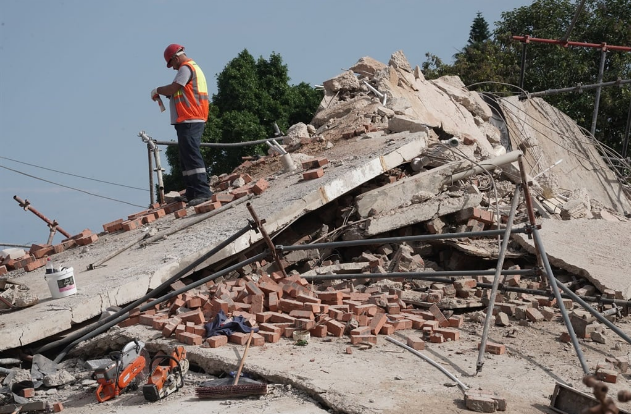Nearly two weeks ago, the George building in the Western Cape experienced a catastrophic collapse, marking one of the most severe structural failures in recent history.
The timeline of events leading up to the collapse remains under scrutiny, but initial reports indicate that the building showed signs of structural weakness in the days preceding the incident.
On the day of the collapse, emergency services were promptly alerted and arrived on the scene within minutes, initiating a comprehensive search and rescue operation.
[Rescuers Work Tirelessly To Find Survivors As Death Toll Surpasses 2,000 In Morocco Earthquake]
The initial response was characterized by a coordinated effort from various emergency services, including firefighters, paramedics, and specialized search and rescue teams.
These teams worked tirelessly around the clock to locate and extricate individuals trapped under the rubble.
Early reports on the number of victims fluctuated significantly due to various factors, including duplicated names on the contractor’s list and the presence of workers who were not at the site on the day of the incident.
As the search and rescue operations progressed, authorities confirmed that 62 individuals were present at the site during the collapse.
Among these, 28 individuals were rescued alive, though 10 of them remain hospitalized due to severe injuries. Nineteen survivors have been discharged after receiving necessary medical care.
Despite the relentless efforts of the rescue teams, the death toll has tragically risen to 34 on Sunday, following the demise of an injured individual who was hospitalized.
In a statement from the George municipality, officials acknowledged the complexity of accounting for all individuals due to the aforementioned issues.
The municipality has emphasized that ongoing investigations aim to provide a clearer understanding of the circumstances leading to the incident and to ensure that such a tragedy does not recur.
The fluctuating victim numbers and the heartbreaking increase in fatalities underscore the severity of the collapse and the urgent need for stringent safety measures in construction practices.
The South African Police Service (SAPS) has officially launched a formal investigation into the catastrophic collapse of the George building, now declared a crime scene.
Following an exhaustive search and rescue operation, control of the site was transferred to the SAPS to facilitate a thorough examination of the incident.
The investigative process will encompass meticulous scrutiny of structural integrity records, eyewitness testimonies, and any potential breaches of construction regulations or safety protocols. The primary objective is to ascertain the root cause of the collapse, ensuring justice and accountability for the tragic loss of 34 lives.
The Labour Department’s Chief Inspector, David Esau, has taken a proactive stance in addressing the urgent needs of the affected families.
Esau is advocating for the prompt registration of injured parties and the families of the deceased for compensation and assistance. This initiative is pivotal in providing immediate financial relief and support.
The Labour Department is collaborating closely with the Compensation Fund, the Unemployment Insurance Fund (UIF), and the social security fund to streamline the compensation process.
Eligibility for these compensations extends to both citizens and foreign nationals who were employed at the time of the incident.
The administrative framework is designed to be inclusive, ensuring that all affected individuals receive the support they are entitled to.
Families can register for benefits through designated channels, facilitated by the Labour Department’s outreach programs and support services. The Compensation Fund and UIF are instrumental in this process, offering financial aid to cover medical expenses, funeral costs, and loss of income.
Catch up with the latest news from The Times Post on WhatsApp by following our channel. Click here to join.
Kindly follow @thetimespost on Instagram. On X (Twitter), follow @thetimespost2.















